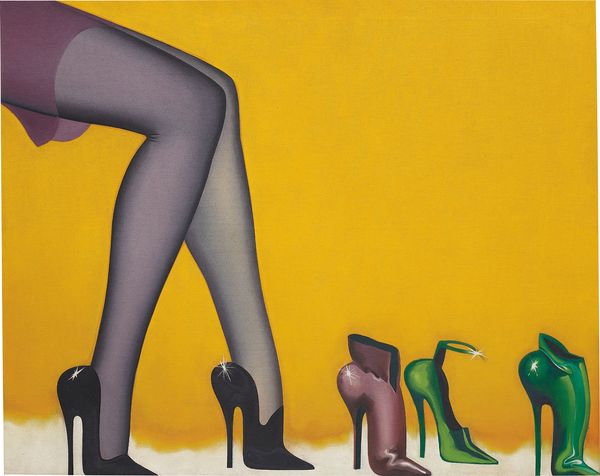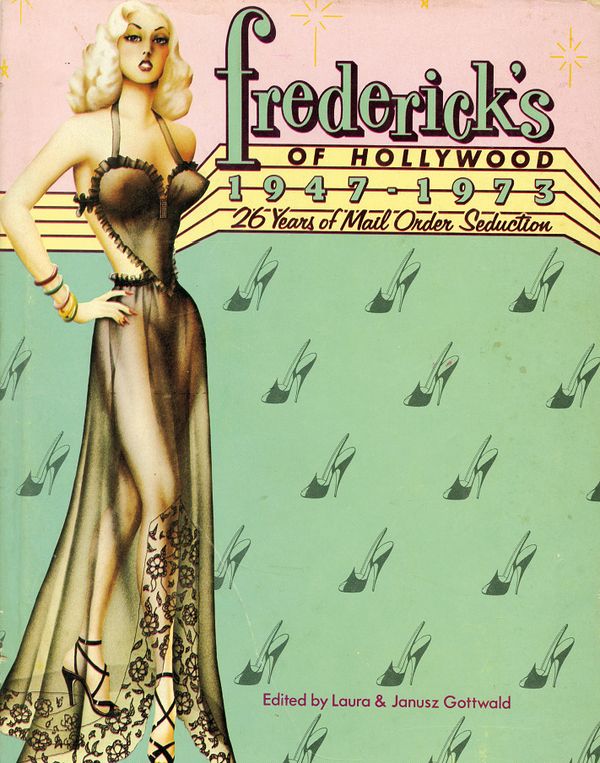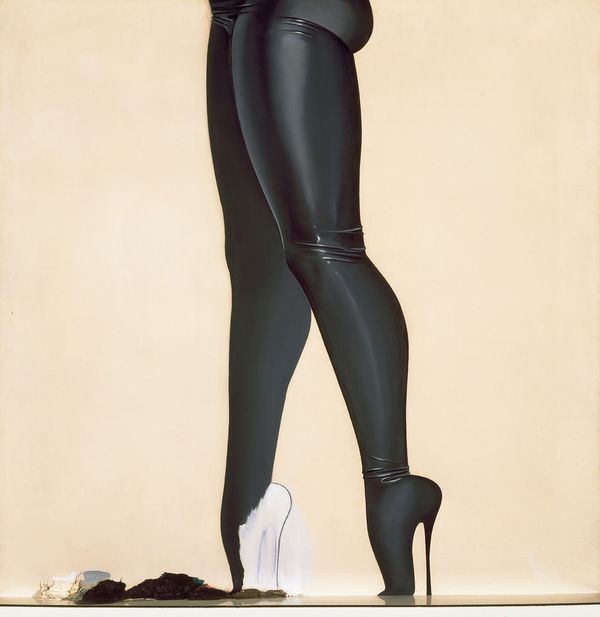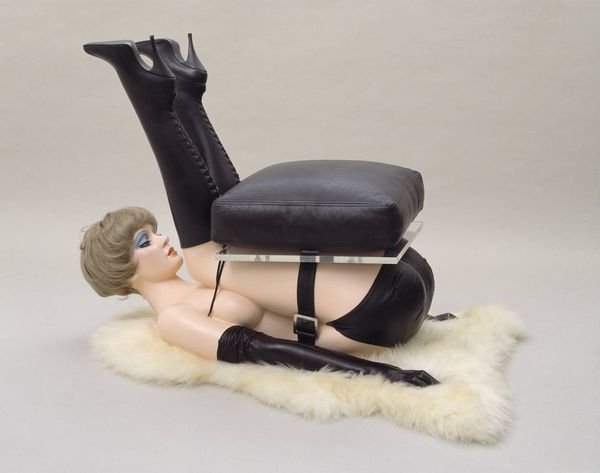Allen Jones T-riffic, 1966
Phillips: During the 1960s you spent a period of time in New York and the US — an epicenter of pioneering artistic creativity. What made you want to leave the bustling metropolis? Did you find the reception of your work varied when you returned to Europe?
Allen Jones: My wife was expecting twins and we wanted them to grow up in the U.K. Experience told me that it is easier for Europeans to go west than it is for Americans to come east. My work at that time was critically well-received with museums buying it on both sides of the Atlantic.
The leg paintings...were my response to the clarity I found in the New York paintings of Roy Lichtenstein and Tom Wesselman, whose images were clear and unambiguous.
P: T-riffic (1966) is one of your first compositions featuring legs. Did you start working on this series in New York? Did you use particular models and muses for your work and, if so, who was the sitter for T-riffic?
AJ: I didn't need a sitter; inspiration was all around me on the Kings Road. The leg paintings were all made in London, and this was the fifth picture in the series depicting legs. They were my response to the clarity I found in the New York paintings of Roy Lichtenstein and Tom Wesselman, whose images were clear and unambiguous.
Catalogue cover and pages from Frederick's of Hollywood mail order catalogue, 1963-64 edition. T-riffic was featured in this edition: 'T-Straps with a difference! Teetery heels almost top 5''… vamp straps glitter with rhinestones and nailheads. Comfortable, too! In Black Silk or Gold Kid, they're fittin' for imprintin' at Grauman's Chinese Theater. Sizes 4 to 10 Medium.'
P: The present work, which comes to auction in our London 20th Century & Contemporary Art Evening Sale this month, seems to draw influence from the slick aesthetics evident in advertising, billboards and the sexual liberation prevalent in New York at that time. What was the particular inspiration for T-riffic? Does the title relate to the subject matter?
AJ: In 1965 during my first visit to Los Angeles, I came across Frederick's of Hollywood mail order catalogues. The 'high street glamour' and cluttered layout of each page worked against the illusionism of the drawings, making the sexiness of the products acceptable in the sunny suburbias of America.
Abstract Expressionism seemed to have swept away the orthodoxies of figurative painting in the late '50s as taught at British art schools. For those of us still compelled to represent the visible world, a new visual vocabulary was needed. Advertising, commercial illustration and comic strips provided a language unfettered by the rules of fine art. All titles for my leg paintings came from shoe names illustrated in the Frederick's catalogues.
Allen Jones Wet Seal, 1966. Tate, London © Allen Jones. Image: Tate, London 2018
P: On the reverse of the canvas we note that there is an extended title for the work: T-riffic (I'll take this one please). What is the importance of this title in relation to the work?
AJ: I had the idea that the painting could be a dialogue between the sales assistant (the painting) and the client (the viewer) in the matter of choice.
Allen Jones Chair, 1969. Tate, London © Allen Jones. Image: Tate, London 2018
P: During this period we occasionally see an incorporation of three-dimensional materials, like steps and ledges into your work. Is this picture a precursor of your later furniture sculptures such as Chair, Hatstand and Table (1969)?
AJ: The oblong shape of the canvas emphasized the episodic nature of the image. I later discovered that an object attached to the canvas surface asserted its flatness, allowing the painted marks to play with illusionistic depth without destroying the fact of the surface.




